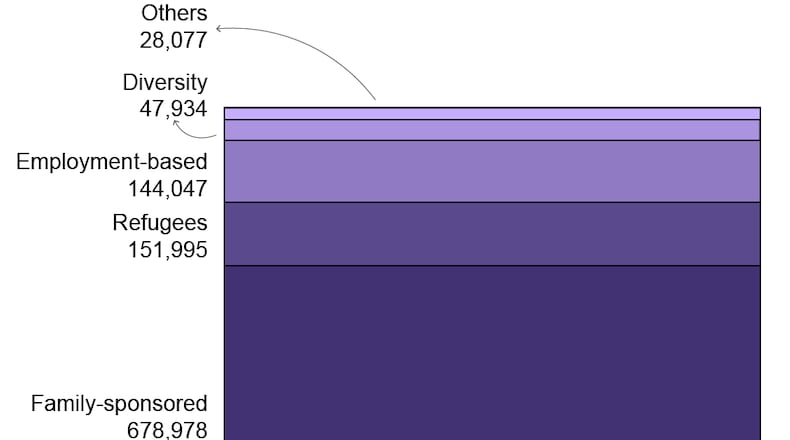President Trump has backed U.S. Sen. David Perdue's bill to cut legal immigration by half, saying it would "reduce poverty, increase wages and save taxpayers billions and billions of dollars." However, data shows that employment-based immigration is a very small percentage of immigrants who follow this path. Families — parents , children and spouses — are the primary beneficiaries of legal immigration.
According to the latest report by the Department of Homeland Security, the United States issued lawful permanent residencies, referred to as green cards, to more than 1.05 million people in 2015.
Almost 65 percent of these were sponsored by families — U.S. citizens who wanted their parents, children or spouses to come live with them in the United States. Nearly one in five green cards were allotted to parents and children of citizens.
The legislation, called the Reforming American Immigration for a Strong Economy (RAISE) Act, eliminates the clause allowing citizens to sponsor green cards for their parents, only allowing them if they are sick and dependent.
Employment-based petitions were 14 percent of the total number of people who were granted lawful permanent residency in the U.S. in 2015.
The bill also seeks to eliminate the diversity visas, an annual lottery where foreign citizens with at least a high school degree can apply to become a permanent resident of the U.S. These visas comprised just 4.6 percent of the total permanent residencies granted by the federal government in 2015.
Country of origin
Mexico got the largest share of green cards in 2015, followed by China, India, Philippines and Cuba.
As far as Georgia is concerned, the number of permanent residents has actually reduced since 2006. More than 25,000 legal permanent residents were based in Georgia in 2015. Of these, 80 percent were from the Atlanta-Sandy Springs-Roswell metropolitan region.
About the Author
Keep Reading
The Latest
Featured



